Does prostate massage help relieve symptoms of BPH (benign prostatic hyperplasia)? The answer is complex. While a prostate massage may help the enlarged gland release fluid, the relief will likely be temporary. As such, this post explores the risks and benefits of prostate massage for BPH, along with more lasting treatment options.
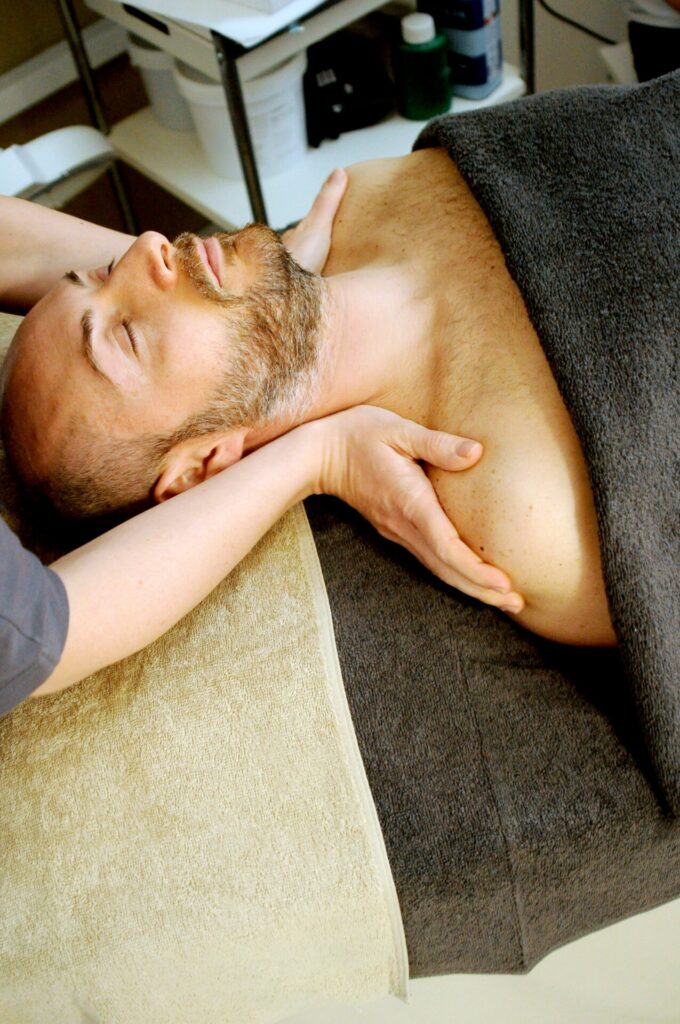
BPH Treatment Options
The severity of your BPH symptoms will often determine your best treatment option. Men with mild symptoms can make lifestyle changes to manage BPH: try reducing your intake of caffeine or alcohol; follow a special diet; or even consider prostate massage for BPH symptoms’ temporary relief.
However, if you continue to experience discomfort, further intervention many be necessary. Some men will find relief from medication, while others may explore Prostate Artery Embolization. (Explore what’s involved with the PAE procedure here.) But if you want to get temporary help from prostate massage for BPH, here’s what you should know.
BPH Massage Benefits
Getting a prostate massage for BPH could temporarily relieve swelling and pressure. In turn, your urinary flow could improve, and stopping and starting urination could be easier as well. But, according to science, does prostate massage help BPH? The results are few, but interesting.
BHP Massage Studies
One 2023 study followed a 55-year old man who received BPH prostate massage to relieve mild symptoms. His prostate volume was reduced by 30%, but due to the limited study size, researchers could not draw larger conclusions about the technique’s benefits.
A 2007, study followed 43 who got therapeutic BPH massages, and each one said his symptoms improved afterward. As such, Cleveland Clinic urologist Dr. Petar Bajic says “There’s no evidence that a prostate massage provides any medical benefit.” Moreover, he cautions men that you could experience pain, worsening hemorrhoids or even a rectal injury if you get a BPH massage.
Do you want safe and effective relief from your enlarged prostate symptoms? PAE treatment research has proved to relieve lower urinary tract symptoms (LUTS) more effectively than medication, and with fewer side effects than many other treatments. Connect with us to request a consultation and discover whether you’re a candidate for PAE at the Texas Prostate Institute.
If your prostate gland becomes enlarged, it may be the result of BPH (benign prostatic hyperplasia) prostatitis and prostate cancer. And, depending on the cause of enlargement, you may experience symptoms such as difficulty starting or stopping urine flow; an urgent need to urination; or nighttime waking to urinate (also known as nocturia.) Though less common, having an enlarged prostate can cause back pain for some men. So, in this post, we’ll explore causes of back pain from prostate enlargement and options for symptom relief.
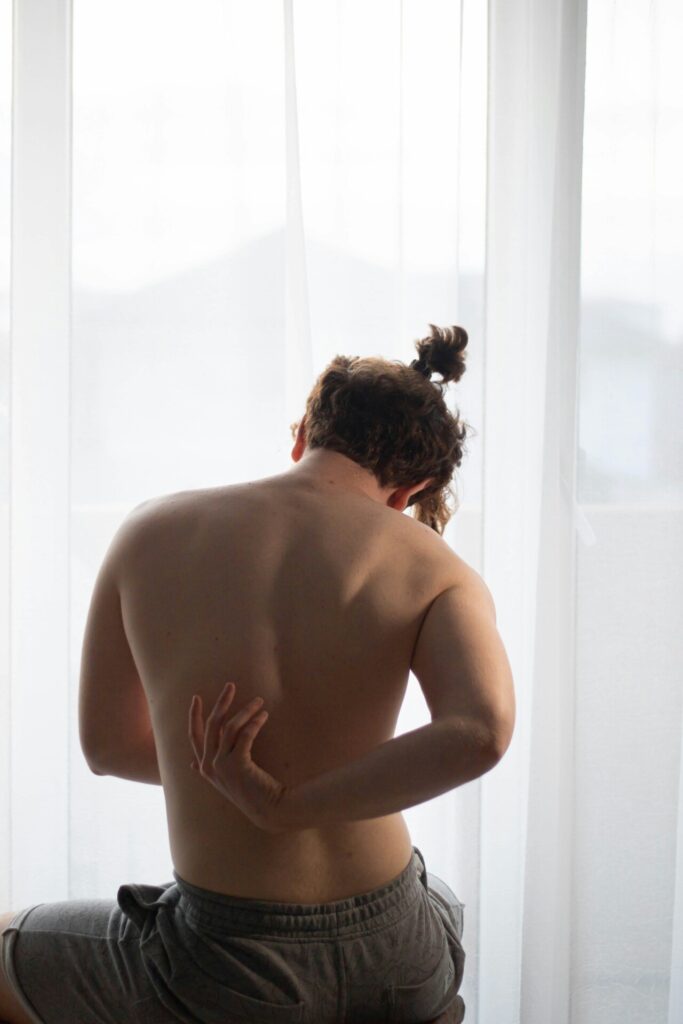
Enlarged Prostate Symptoms
An enlarged prostate typically causes lower urinary tract symptoms such as:
- Difficulty urinating
- Urgency or incontinence with urination
- Dribbling urinary flow
- Interruptions to the flow of urine
- Nocturia
These symptoms can develop with any form of prostate enlargement. However, if you have an enlarged prostate due to prostatitis, you may also develop back, abdominal, groin, penis or testicular pain; blood in the urine or in your semen; frequent urinary tract infections; burning with urination; pain after sex or with ejaculation; rectal pressure or pain; and pain when you pass a bowel movement.
If prostate cancer is the reason for gland enlargement, you may experience back pain; leg pain; abdominal pain; and unexplained weight loss. Blood in your urine and erectile dysfunction could also be a concern. When prostate cancer advances, you may also experience numbness, swelling and pain in your legs. Be sure to mention all your enlarged prostate symptoms to a healthcare provider to help you receive an accurate diagnosis and proper medical care.
Back Pain from an Enlarged Prostate: Treatment Options
If you have prostate back pain caused by BPH, lifestyle changes may help manage your symptoms. Engaging in strength exercises for the lower back may improve your comfort, as long as you don’t strain your muscles. You may also benefit from increasing your fiber and water intake, making sure to avoid irritants such as caffeine and alcohol that may worsen BPH symptoms. You should also seek medical care to rule out cancer or prostatitis if you have additional symptoms.
If BPH is determined to be the cause of your back pain, leg pain or other urinary tract symptoms, you can find relief through treatment. And, if lifestyle measures aren’t sufficient, you can pursue prostate artery embolization, PAE treatment in Texas. It’s a minimally invasive procedure that reduces your prostate size by blocking its blood flow. At Texas Endovascular, we perform the procedure without large incisions, so you don’t need general anesthesia and you can avoid overnight hospital stays. Request a consultation with our interventional radiologists and we’ll provide you with more information about PAE, exploring your candidacy for this treatment option for BPH.
Benign prostatic hyperplasia (BPH) can cause symptoms such as the urgent need to urinate or waking multiple times a night to pee. Treatment can relieve symptoms, and many people turn to Cialis for BPH before exploring procedures to address an enlarged prostate. This post explains how this medication impacts men with symptomatic BPH.

What is BPH
When you have BPH, the cause of your prostate enlargement is unclear. Depending on the severity of your condition, your BPH symptoms may be mild or extremely disruptive. As such, many men can manage their condition with changes to their diet and lifestyle. But others may turn to medications such as Cialis, or other medical interventions.
Cialis for BPH
Cialis (or tadafil, as it’s known generically) was first developed to address erectile dysfunction. In 2011, however, the FDA approved Cialis for BPH treatment, based on studies such as this that showed its effectiveness at relieving lower urinary tract symptoms associated with prostate enlargement.
How does it work? Basically, Cialis increases cGMP levels in the body, increasing blood flow to your penis while relaxing your prostate and bladder muscles. As a result, when taken once daily, at the same time each day, the medication can make it easier to start urinary flow. It can also reduce night-time wakings to urinate. As an added bonus, the medication can improve male sexual function for 36 hours after taking each Cialis dose.
Side Effects and Counter Indications
Cialis side effects are typically mild, and include headaches; stomach upset; back or muscle pain; facial flushing; and a stuffy nose. But if you take nitrates or medication to lower your blood pressure, avoid Cialis, as it will increase your risk for a sudden, potentially dangerous drop in blood pressure.
Cialis for BPH and Other Treatment Options in Texas
While many men with BPH enjoy an improved quality of life when taking Cialis, there are other treatment options for men who cannot tolerate this medication, or those who do not experience sufficient relief from their prescription. In such cases, our specialists at the Texas Prostate institute encourage you to request a consultation [/tx-appt link] with our team of interventional to learn more about Prostate Artery Embolization (PAE treatment) and to learn whether you’re a candidate for this intervention. As a minimally invasive procedure, PAE treatment benefits include symptom relief and the ability to avoid large surgical incisions, general anesthesia and overnight hospitals.
As men age, many develop a condition known as Benign Prostatic Hyperplasia (BPH, also referred to as an enlarged prostate.) While the exact causes of this condition are unclear, focusing on your prostate health may help you avoid symptoms such as urgent urination and difficulties starting or stopping the flow of urine.
Some people think that drinking tea for prostate health can help prevent BPH. But what does the science say? Here’s what you need to know.
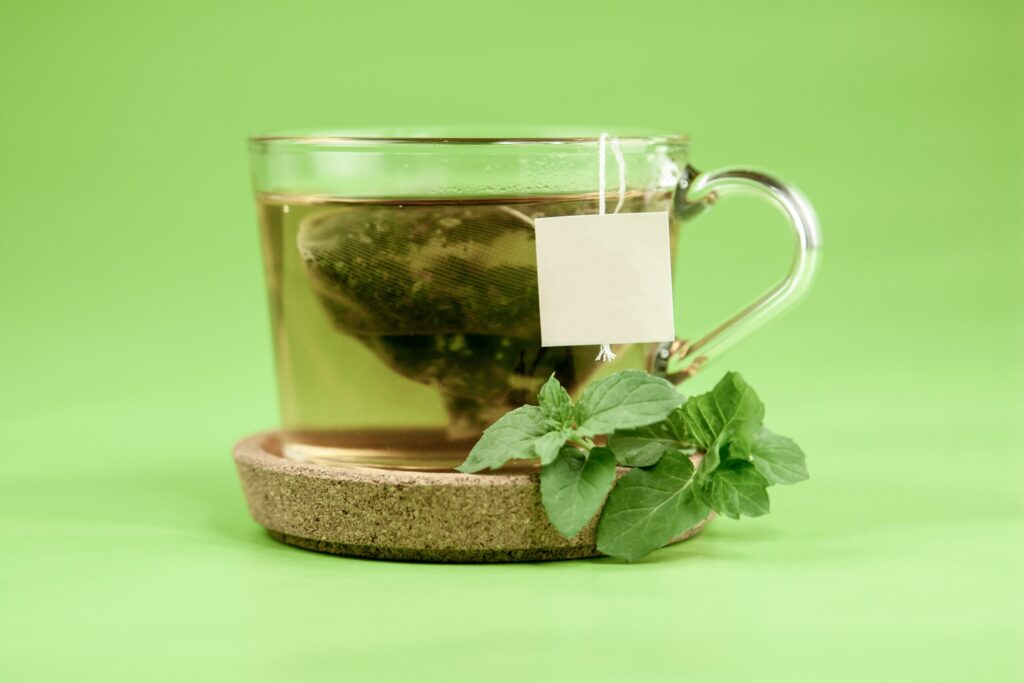
Research on Green Tea for Prostate Health
While several studies suggest that drinking green tea may protect you against prostate cancer, BPH is a non-cancerous condition. And, when this study examined the effects of green tea on PSA levels (Prostate-Specific antigens, which, when elevated, can indicate a BPH diagnosis), they learned that drinking this beverage did not affect levels in any noticeable way.
Moreover, if you already have BPH, drinking caffeinated beverages, including black and green tea, may worsen symptoms such as the urgent need to urinate. As such, turning to tea for prostate health is unlikely to prevent prostate enlargement, and may in fact worsen existing BPH symptoms. However, that doesn’t mean you can’t support prostate health through your diet. It just means you need to try these foods and beverages instead.
Dietary Support for BPH
When you have an enlarged prostate, you should try to incorporate more vegetable and fruits into your diet. Look for high fiber staples such as oatmeal and brown rice, along with lean proteins like grilled chicken breasts or salmon.
Also, while tea for prostate health is not recommended, drinking more water can help improve your symptom burden. Or, if you need a little more excitement from your liquid diet, try drinking a fruit-based smoothie for breakfast or as a mid-morning snack.
Finally, what you don’t eat matters almost as much as what you add to your diet for an enlarged prostate. Steer clear of red meat, dairy products, spicy foods and foods that contain a high sodium content. And, when lifestyle measures such as diet don’t offer enough symptom relief, our experts at the Texas Prostate Institute may be able to help.
Non-Surgical Relief for BPH
To review, drinking tea for your prostate won’t treat BPH symptoms; in fact, it may make them worse. So, if you’re suffering from persistent lower urinary tract symptoms (LUTS), we encourage you to explore PAE (prostatic artery embolization). This minimally-invasive, non-surgical procedure can relieve BPH symptoms without the risk of incontinence or erectile dysfunction. Plus, it allows you to avoid overnight hospitals stays and general anesthesia. Want to learn if you’re a candidate for PAE in Texas? Click here to request a consultation and learn more.
Many men experience an enlarged prostate due to benign prostatic hyperplasia (BPH), meaning their condition is not cancerous. However, some men with prostate cancer may also experience prostate enlargement, along with many of the same lower urinary tract symptoms (LUTS) suffered by those with BPH. And, according to experts at the Moffitt Cancer Center, undergoing PAE treatment for prostate enlargement prior to undergoing prostate cancer therapy may be beneficial.
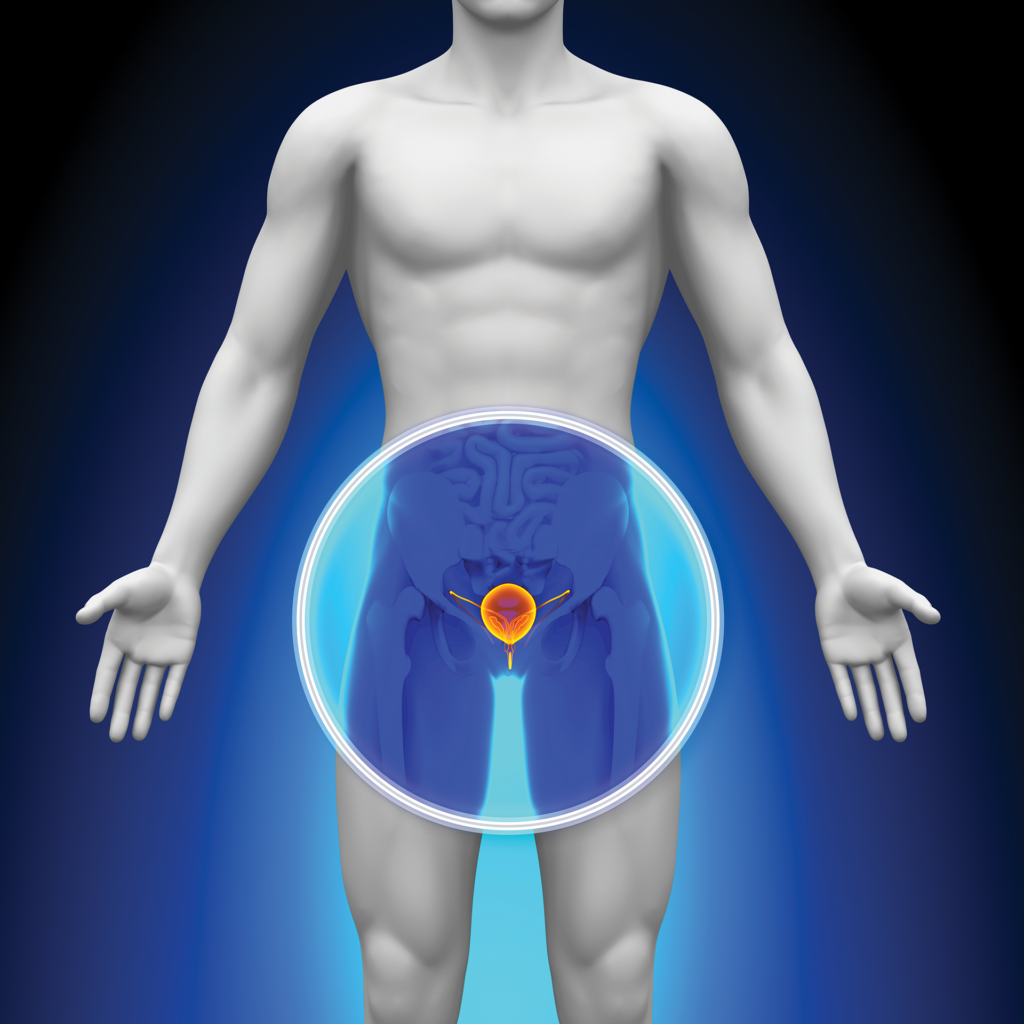
What is PAE?
PAE, or prostatic artery embolization, is a non-surgical medical procedure that blocks flow to the artery feeding your prostate. This happens when our interventional radiologists deposit embolic materials in the artery, via catheter and x-ray guided imaging.
Now, for men with BPH, undergoing PAE treatment for prostate enlargement can provide fast relief from symptoms such as urinary urgency and waking in the night to pass urine. Better yet, it provides relief without the need for surgery or overnight hospital stays, all with a far lower risk of sexual side effects or other serious complications. And now, it turns out that men with prostate cancer may also benefit from undergoing PAE treatment prior to beginning radiation therapy.
PAE Treatment for Prostate Prior to Prostate Cancer Therapy
According to Dr. Nainesh Parikh, an interventional radiologist who is also Moffitt Cancer Center's assistant chief medical officer, patients who undergo PAE prior to radiation therapy for cancer therapy may be able to shorten the course of their cancer treatment. At the same time, they will benefit from LUTS reductions, as well as a beneficial reduction in the size of their prostates. Furthermore, he told the BackTable Podcast that, with more research, PAE may be beneficial to men who are undergoing other forms of prostate cancer treatment, along with men who experience prostatits or chronic pelvic pain after prostate radiation therapy.
PAE in Texas
Whether you have been diagnosed with BPH or prostate cancer, choosing this medical procedure can offer symptom relief and shrink your prostate without surgery. Ready to see if you're a candidate for prostatic artery embolization? Click here to request an appointment at the Texas Prostate Institute today!
If you have been diagnosed with an enlarged prostate, you may be worried that you have cancer. That's especially true after King Charles went into the hospital to treat an enlarged prostate, only to emerge with a cancer diagnosis. However, for most men, an enlarged prostate and cancer are two completely separate diagnoses.

What is BPH?
When you have an enlarged prostate, also referred to as benign prostatic hyperplasia, it means your prostate gland has grown, but for reasons other than cancer. (After all, benign means a non-cancerous growth.) Still, this condition can cause many intrusive symptoms, often prompting men to seek treatment for an enlarged prostate, either through lifestyle changes, medications, surgery or minimally invasive procedures such as PAE (prostatic artery embolization in Texas.)
Enlarged prostate and cancer: can you have both conditions at the same time?
According to the National Cancer Institute, symptoms of BPH can mimic those of prostate cancer. (Common symptoms may include an urgent need to pass urine during the day, or waking up multiple times a night to pass urine. You may also experience a reduced urinary flow with both of these conditions.) However, while it is possible to have both BPH and prostate cancer or other men's health concerns, having an enlarged prostate does not increase your risk for cancer.
Now, while a BPH diagnosis does not affect your cancer risk, men who suffer from this condition could experience severely negative impacts on their quality of life. Plus, treating BPH relieves symptoms of an enlarged prostate. So, if you do have additional health concerns, treating BPH could help bring clarity to your diagnosis.
Ready to relieve your enlarged prostate symptoms, but want to avoid surgery? Click here to request an appointment at the Texas Prostate Institute. We can help you decide if Prostatic Artery Embolization, a minimally invasive procedure that reduces prostate size by cutting off its blood flow, is the right treatment to relieve your discomfort.
When you're living with benign prostatic hyperplasia (BPH), you may be wondering: can a diet for enlarged prostate provide relief? Now, the best way to find relief is to seek medical intervention. But, in the meantime, you can try following these dietary guidelines to help with symptom management.
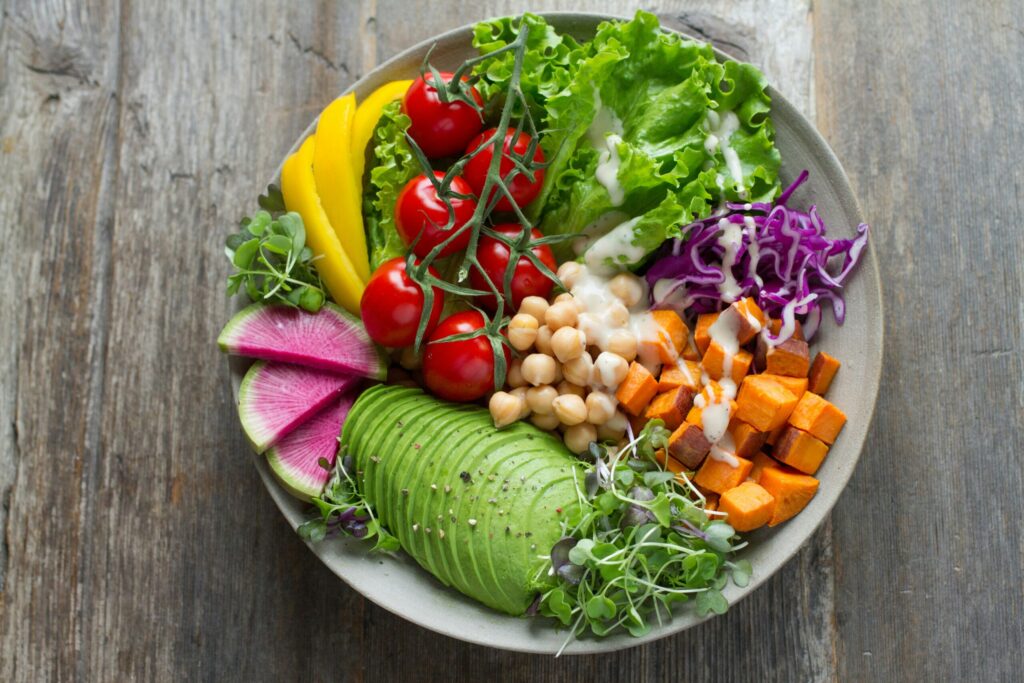
Diet for Enlarged Prostate
Men with BPH experience disruptive symptoms such as urinary frequency and difficulties starting the flow of urine. Of course, the best way to relieve these and other lower urinary tract symptoms (LUTS) is to shrink your prostate, something you can accomplish (without surgery!) by scheduling a prostatic artery embolization procedure.
However, lifestyle changes can also help you manage BPH. And, according to research, making certain changes to your diet can help relieve discomfort. For maximum benefits, try:
- Following a low-fat-diet
- Incorporating more vegetables into your daily meals
- Enjoying daily servings of fruit, especially citrus fruits such as oranges
- Choosing lean proteins such as fish and poultry
Other Lifestyle Tips for Managing BPH
In addition to changing up your diet for enlarged prostate relief, other lifestyle changes may provide you with symptom relief. Try to reach and maintain a healthy weight, and engage frequently in moderate to vigorous exercise, as long as you've been cleared for activity by a doctor.
You should also avoid certain beverages, especially ones with caffeine and alcohol, since they can both increase your urge to urinate. And cut off all liquid intake several hours before bed, or if before heading out for an activity. Finally, if you are interested in finding longer lasting BPH relief, click here to request an appointmentat the Texas Prostate Institute to see if you are a candidate for PAE!
If you have benign prostatic hyperplasia (BPH), you may hope to shrink an enlarged prostate naturally. Now, some men may find relief for BPH symptoms with simple lifestyle changes. But other men will need medical intervention to treat their enlarged prostate. Here's what you need to know.
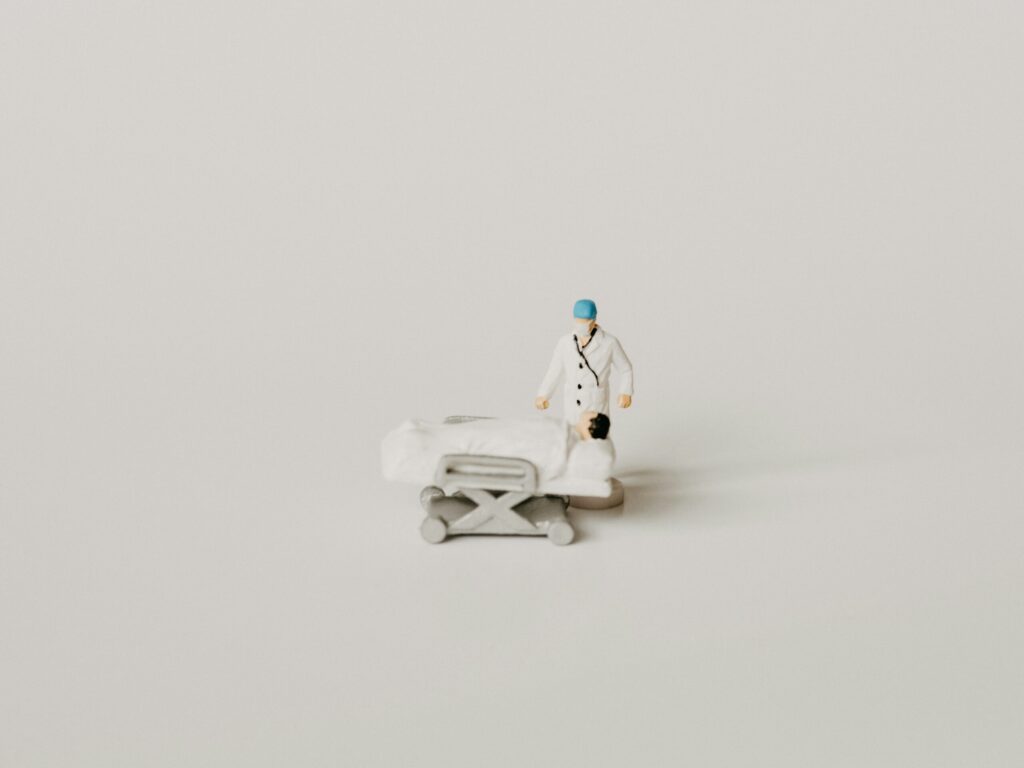
Shrink an Enlarged Prostate: Natural Treatment Options
While you can't shrink an enlarged prostate without medical interventions, some lifestyle measures can help manage symptoms of this condition such as urinary frequency, waking in the middle of the night to pee, and struggling to start urinary flow. Together, these relieving measures will make it easier to get through your day and sleep at night.
To help relieve symptoms of BPH, try:
- Avoiding liquids for several hours before bedtime
- Limiting your intake of caffeine and alcohol, since both can make you need to urinate
- Following a low-fat diet
- Eating lots of vegetables and fruits, especially citrus fruits
- Getting physically active on an almost daily basis
- Maintaining a healthy weight
Again, these measures will not shrink your prostate gland if its already enlarged. However, you may be able to find symptom relief through diet, exercise and carefully monitoring your fluid intake.
When to Seek Medical Intervention
When lifestyle measures fail to relieve your BPH symptoms, and you wish to avoid surgery, you can shrink an enlarged prostate with PAE, or prostatic artery embolization. This procedure, performed at the Texas Prostate Institute, physically shrinks your prostate gland by reducing it's blood supply. In turn, you experience symptom relief without surgery. And that allows you to avoid overnight hospital stays, extended recovery periods, and serious side effects.
Do you want to learn more about PAE and relieving BPH symptoms? Our interventional radiologists are here to help. Click here to request an appointmenttoday!
Prostatic artery embolization is an FDA-approved, non-surgical treatment for an enlarged prostate. It can relieve lower urinary tract symptoms (LUTS) associated with Benign Prostatic Hyperplasia (BPH), without the risk for sexual side effects or other serious complications. But how long does prostate artery embolization last? Here's what you need to know.
What is PAE?
The PAE procedure deposits tiny particles via catheter to inhibit blood flow to your prostate. Once blood flow no longer reaches your enlarged prostate, it begins to shrink, relieving LUTS. During the procedure, you'll be under moderate sedation, so you will be comfortable while avoiding general anesthesia like with traditional surgery. In all, the PAE procedure lasts about two hours. And, since it's done in an outpatient setting, you can also avoid overnight hospital stays.

Results: How long does prostate artery embolization last?
Study results presented at last year's Society of Interventional Radiology's Annual Scientific Meeting revealed that1000 North American patients who underwent PAE reported sustained LUTS relief for up to six years.
In announcing his results, senior study author Dr. Shivank Bhatia said, "Our study shows that PAE is a highly effective treatment whose long-term outcomes include sustained LUTS relief and significant improvement in quality of life."
And, he notes, this information is important since, "Of 18 million men in the U.S. eligible for BPH treatment, many avoid all treatments because of the widely known risks of surgery, particularly sexual side effects and leakage. PAE avoids these risks while achieving long-term positive clinical outcomes."
Ready to see if PAE is your key to long-lasting LUTS relief? Click here to request an appointment at the Texas Prostate Institute. When you come in, we'll review your procedure candidacy!
If you've been diagnosed with benign prostatic hyperplasia (BPH, also known as an enlarged prostate), you may be researching treatment options. After all, this condition can cause disruptive lower urinary tract symptoms (LUTS) that range from mild to severe. So, while some men may rush to seek medical intervention, others may prefer to manage their condition with lifestyle changes.
Now, both options can help you find relief from BPH. But will that relief last? And what happens if you don't treat BPH? Keep reading to find out!

What is BPH?
BPH is a non-cancerous condition in which your prostate gland enlarges. As a result, the prostate tissue puts pressure on the urethra, causing disruptions to urinary flow or making you experience more frequent urinary urgency.
Other common symptoms include weak urinary flow or the need to urinate frequently through the night. Men with BPH may also find it difficult to start or stop their urinary flow. And having BPH puts you at an increased risk for urinary tract infections.
What Happens if You Don't Treat BPH?
According to the experts at Johns Hopkins University, you could end up with a thickened bladder; residual urine that becomes infected; bladder stones; and kidney damage if you don't treat BPH. Additionally, without treatment, BPH could leave you with substantial damage to the urinary tract.
Given all these potential complications, why do so many men delay or avoid treating BPH each year? The answer is simple. In the past, available treatment options carried serious health risks, including sexual side effects and the potential for urinary leakage. Today, however, you can treat an enlarged prostate with Prostatic Artery Embolization (PAE), a minimally invasive procedure that shrinks the prostate, relieves LUTS, and does not cause serious side effects.
Ready to see if you are a good candidate for PAE? Click here to request an appointment at the Texas Prostate Institute. We'll review your unique symptoms and health profile, and provide personalized recommendations for how you should treat BPH.







